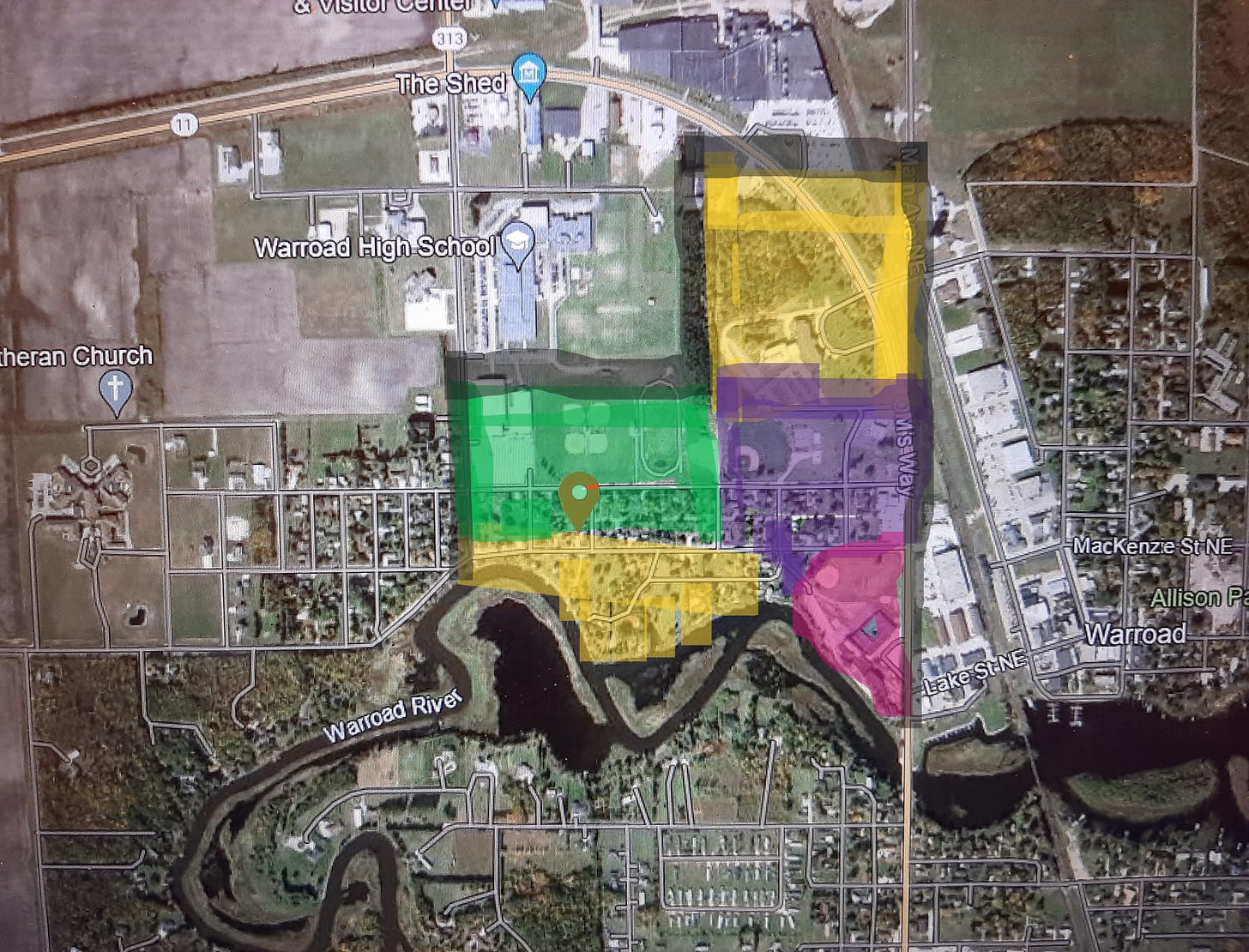
The past few months I have attempted to track what happened to the land in Warroad, Minnesota, designated for Namaypoke in 1897, starting from the submission of his application for an allotment until after his death and through the 1930s. This photo of Warroad today outlines his 1905 allotment and highlights the parcels sold.
You may recall that even before Namaypoke (1840-1916) had the allotment papers in his hands, the Warroad School District had purchased 4.4 acres of it for $150 in 1905. That parcel is highlighted in pink. In 1914 Indian Agent Walter Dickens filed a declaration of Namaypoke as a “noncompetent Indian” and sold Christian Strander two parcels — highlighted in green and purple. Strander then dedicated the two deeds to “the public” of Warroad. When Namaypoke died in 1916, there remained in his estate two parcels of the allotment, highlighted in yellow.
It took me a long time reviewing these documents to understand that when Namaypoke died in 1916, Red Lake Indian Agency remained in control of the land; not the heirs. Because Red Lake Indian Agency had already sold two parcels on Namaypoke’s behalf as a “noncompetent Indian,” they had the authority to sell the remaining acres on behalf of Namaypoke’s heirs.
In 1930, when the 25-year term of allotment status would have come to an end permitting the heirs to file for a clear deed, President Herbert Hoover by Executive Order 5383 extended the term by a decade.
It was also in 1930 when the federal government authorized a flowage easement that included land in Namaypoke’s allotment. The smaller parcel of 7.27 acres lost about 300 hundred feet — the length of a football field — along the river due to flooding.
In 1934, the Minnesota Department of Transportation began construction of State Highway 11. The highway runs along the eastern edge of Namaypoke’s allotment. This main north-south thoroughfare through the city of Warroad crosses the Warroad River and then curves west toward Roseau. When the highway came through, the state took a 100-foot right-of-way and shaved off 4.4 acres on the corner of the 40-acre parcel.
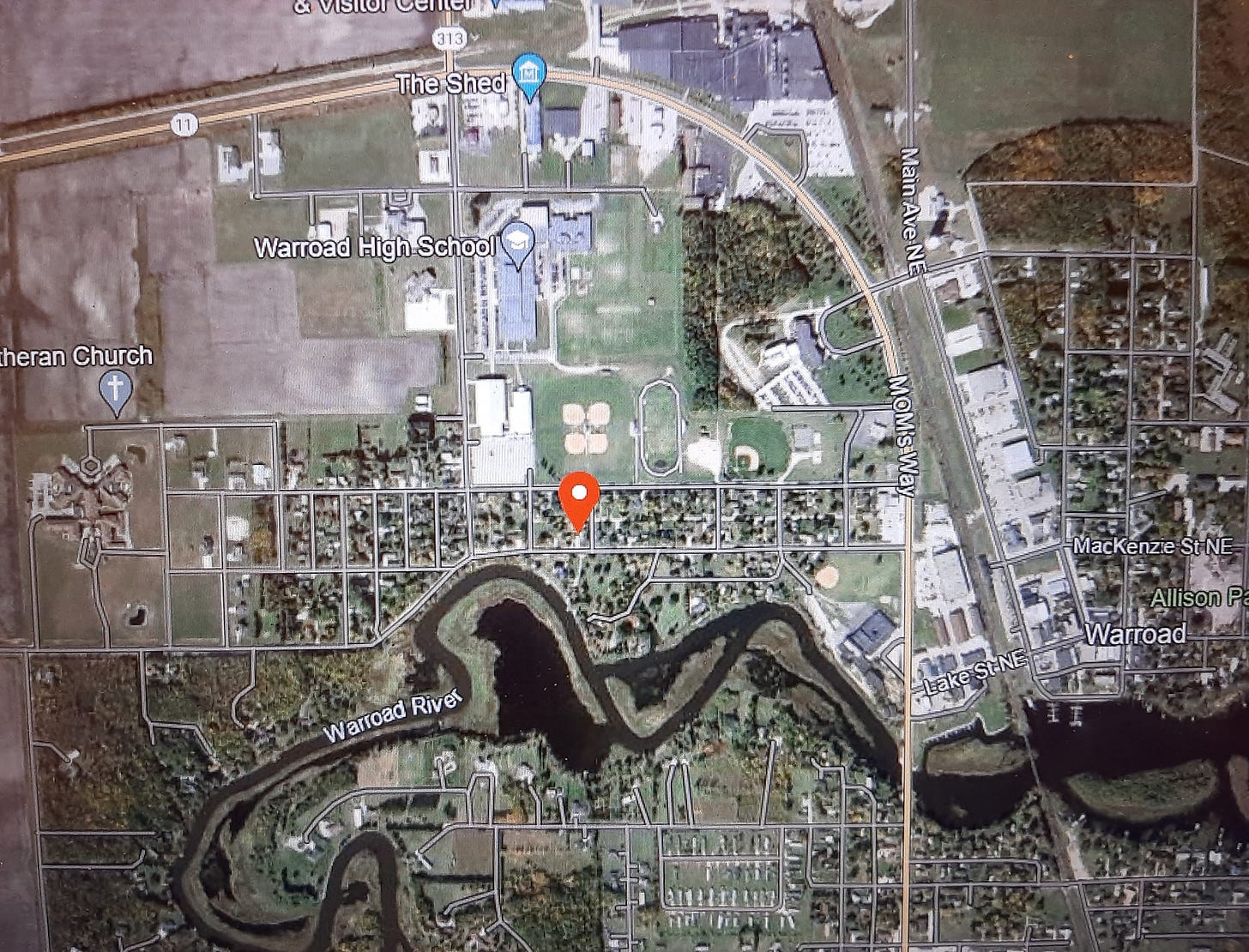
In 1934, Congress passed the Indian Reorganization Act. The Act promised to restore the rights of Indians to manage their own assets — land and mineral rights. The intent was to restore sovereignty of reservation land and encourage self-governance.
Because of the Indian Reorganization Act, the Minnesota State Department of Transportation paid the Bureau of Indian Affairs in 1936 for the acres taken by eminent domain from Namaypoke’s allotment in 1934 for the highway.
When the extension of the allotment term was about to run out in 1940, the Roseau County Recorder received official notice from Red Lake Indian Agency that, because of the 1934 Indian Reorganization Act, the deeds for the two parcels of land remained “trust land” of Red Lake Reservation and exempt from local and state property taxes.
Anna Namaypoke Jones died at the age of 79 on April 23, 1948, in Warroad where she had resided in the house built for her father on the seven acre parcel. Namaypoke’s grandson Louie Goodin died September 25, 1948. And Namaypoke’s eldest daughter, O-gah-kay-ah-sheke (Mrs. Tom Cobanes) had also died.
In November of 1950, the names of the heirs to Anna, her sister, and nephew were added to the Red Lake Land Index and their fractional share of the land left in Namaypoke’s estate recorded.
Three generations — Namaypoke, his daughters, his grandchildren — are listed and none of them ever gained clear title to any of the land before the last of it was sold.
It was August 25, 1954, when the director of the Minneapolis Area Office of the Bureau of Indian Affairs approved the sale of the two remaining parcels of land in Namaypoke’s allotment, according to a copy of the letter he sent to the Director of the Bureau of Land Management.
While none of Namaypoke’s heirs ever gained clear title to any of the land, I did find evidence that Max Jones, Namaypoke’s grandson, had tried in 1954 to buy the 7.27 acre parcel where he had grown up.
On August 26, 1954, Warroad Attorney Bert Hanson sent a letter to Max Jones who was living in International Falls. He wrote it the day after the Minneapolis Director of the Bureau of Indian Affairs had approved the sale of the remaining land in Namaypoke’s allotment. Had the Minneapolis Director of the Bureau of Indian Affairs or someone at Red Lake Indian Agency made a long-distance call to notify him? Hanson knew quickly of the Bureau’s decision.
Hanson’s letter informed Max Jones that his bid of $450 for the 7.27 acre parcel was unsuccessful and the land was sold for $727 to Maynard Nelson.
The second paragraph of the letter advises Jones that Mr. Nelson purchased only the land and that he might be able to sell the house built for Namaypoke to Mr. Nelson. I am curious to know what happened with the house after Nelson bought the land.
In the Red Lake Land Index, the last two entries for this allotment removed the restricted status of the deed as reservation land and reverted the rights to the US government to grant titles to the new owners. Both are dated March 7, 1955.
Maynard Nelson purchased the 7.27 acre parcel along the river.
Marvin Lumber and Cedar Company is listed as the purchaser of the other parcel.
These two transactions in March of 1955 mark the end of entries in the Red Lake Land Index as it converted reservation land to private property. The identity of the purchasers also raises many new questions and I am still searching for answers.
Allotments were intended to promote private property, rugged individualism, and the growth of capital assets through hard work and improvements to the land. That worked out well for some in Warroad, though not necessarily for Namaypoke to whom the allotment had been issued or his heirs.




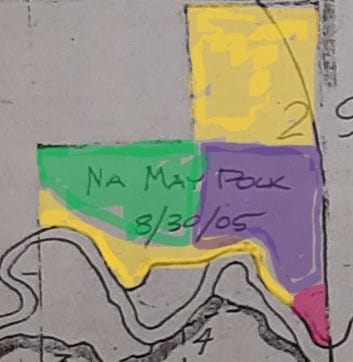
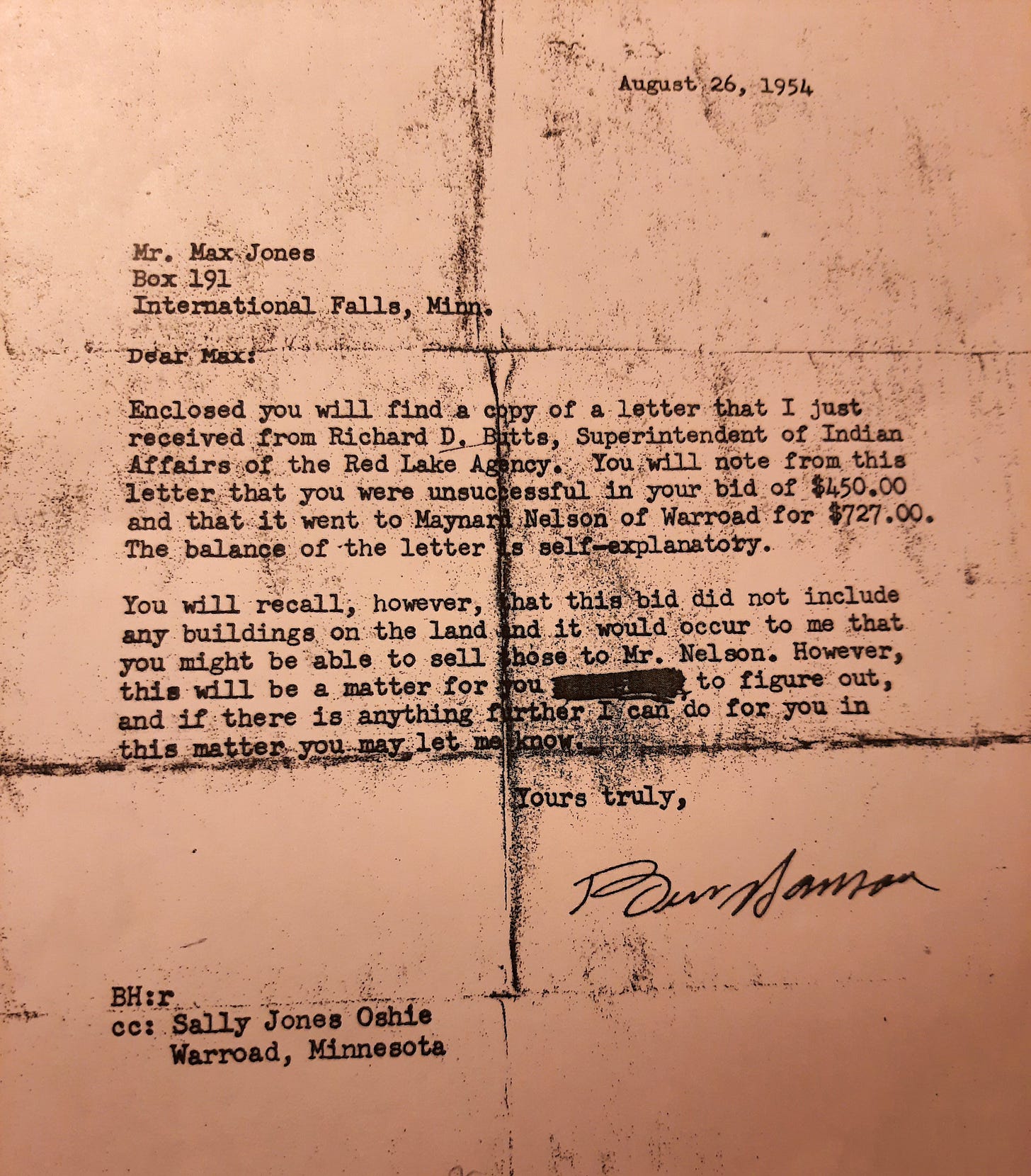
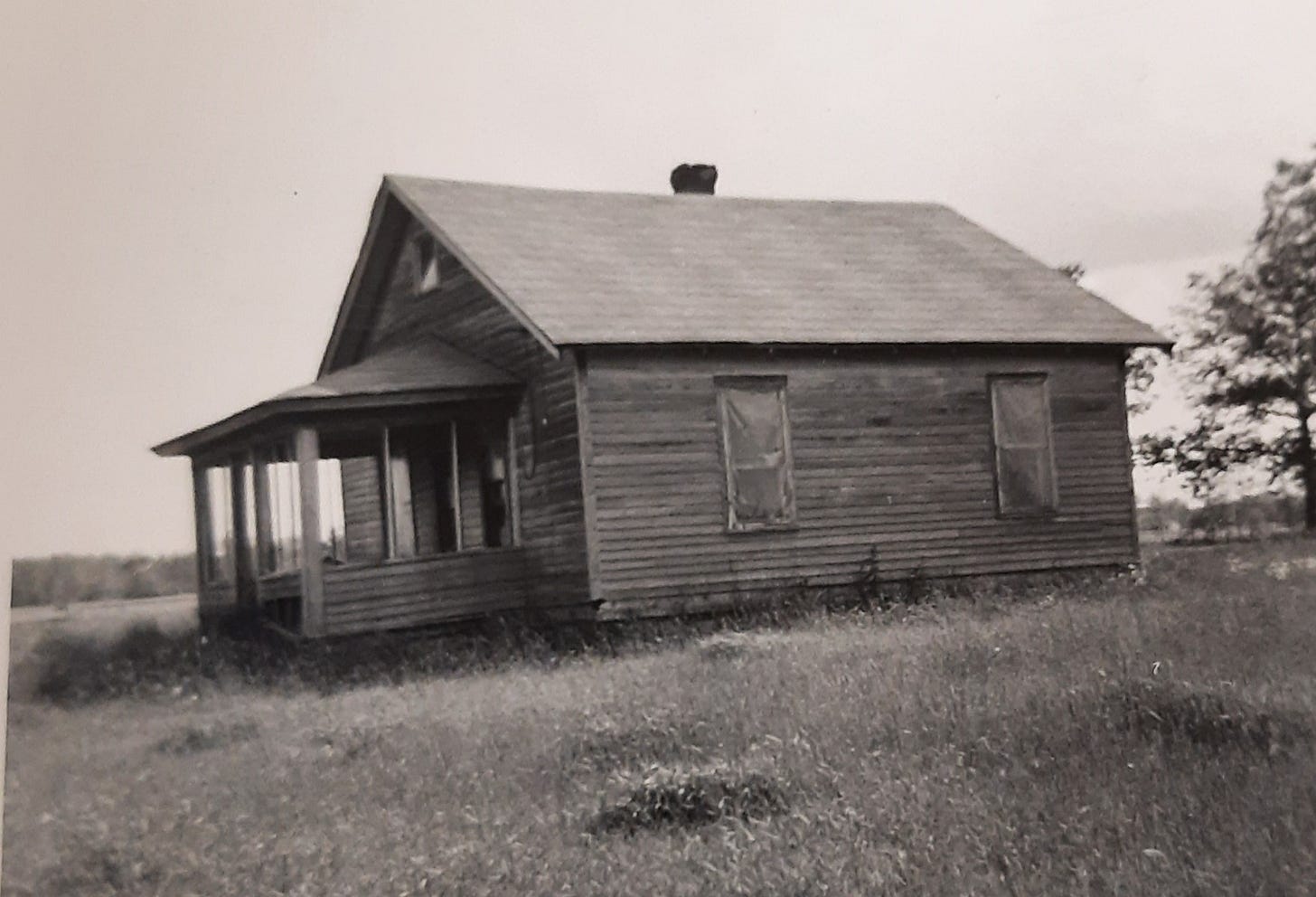

That last paragraph is powerful, Jill. The self serving concept of manifest destiny! I guess how else could a collective consciousness resolve it's dissonance. That you are from the very area you research grounds all of this. It certainly makes this "historical story" very real. And not that long ago!! And how it reverberates today! Can't escape these truths when I read your writings and research. Thank you
Super important to bring the injustices up into the 1950s! This stuff didn’t happen just back in the late 1800s. It’s probably still happening right now…..but hard to dig out. Thanks for your careful, hard work. Focus on a specific place provided important perspectives.